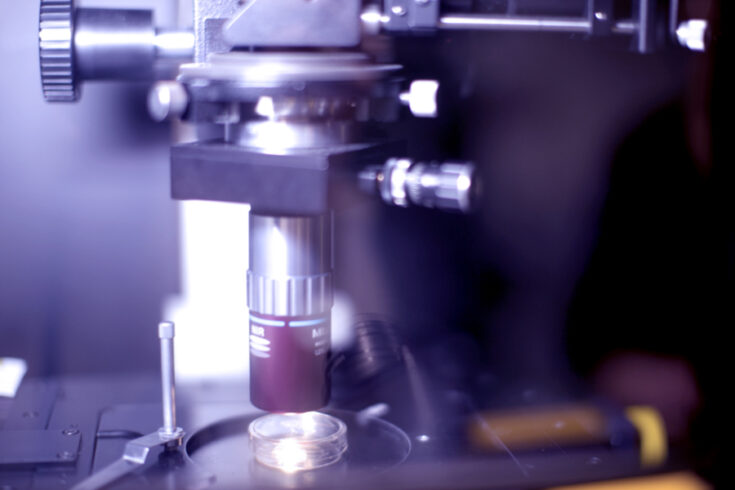Scientists have used the UK’s Central Laser Facility (CLF) to design a cheaper, more flexible microscope that will give microbiologists a greater insight into single biomolecules.
The new microscope design will give scientists in labs a blueprint for detecting the actions and movements of single molecules at a fraction of the price of commercially-available equipment.
Making the specialist equipment more readily available will offer more opportunities to discover drugs for treatment of diseases such as:
- cancer
- HIV-AIDS
- COVID-19.
The microscope, called the smfBox, allows scientists to look at one molecule at a time rather than generating an average result from bulk samples and works as well as commercially available instruments.
An easy-to-use microscope
The researchers built on the original smfBox concept developed by a team at The University of Sheffield. They hope to expand the use of single molecule imaging by giving the wider scientific community detailed build instructions and open-source software to operate the easy-to-use microscope without the need to invest in expensive infrastructure.
The project was a collaboration between The University of Sheffield and the Science and Technology Facilities Council’s Octopus laser system at the CLF.
CLF Octopus link scientist Benji Bateman said:
The smFRET microscope can be easily deployed as a powerful standalone diagnostic instrument or as a complimentary technique to many other single-molecule studies. This will enable researchers to better understand molecular interactions and movements at the biomolecular level, driving advances in drug discovery and helping to tackle global challenges such the HIV epidemic and the recent COVID-19 pandemic.
Simple, cheap design
The design for the new instrument could see a wide range of laboratories using the imaging technique for new applications at a tenth of the cost of commercially-available equipment. The interdisciplinary team developed equipment at a cost of £40,000 that would usually cost around £400,000.
The simplicity of the microscope design is intended to allow scientists unfamiliar with the technique to use the equipment without extensive training. The open-source software means that its applications can be adapted easily for different purposes.
CLF Octopus group leader Professor Marisa Martin-Fernandez said:
Here at Octopus an important aspect of our work is to facilitate non-expert, automated access to advanced imaging equipment, to assist endeavours at the interface of life sciences and physical sciences interface. This remarkable achievement is part of these efforts.
The smfBox was developed using CLF expertise in designing the optics and computing hardware.
Further information
Top image: The Octopus laser at CLF. The Octopus team gave their advice and expertise in the development of the new microscope. (Credit: CLF/STFC)

